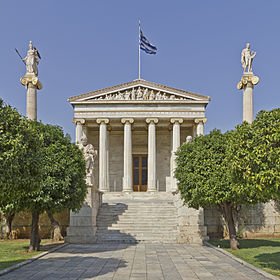Greece
Greece is a country located in South East Europe in the southernmost tip of Balkan Peninsula touching the Eastern Mediterranean. Bordered by Bulgaria and Former Yugoslav Republic of Macedonia (FYROM), to the Northwest; by Albania to the Northeast; by Turkey to the East; by the Aegean Sea, to the West by the Ionian and to the South by the Mediterranean Sea. Greece has a long and rich history with tremendous cultural impact on three continents.
Greece consists of a large mainland part, the southern tip of the Balkans, which connects with the former continental Peloponnese with the Isthmus of Corinth. After the construction of the Corinth Canal the Peloponnese became an island. Greece is enclosed by the Ionian, the Aegean, the Libyan Sea and the Lykio Sea. Greece has 13.676 miles length of coastline, which is considered extremely large, result of the rich landscape territorial dismemberment and the rich terrain of the region. Also there are countless islands, which are more than 2500 and are primarily the result of the collision of the African plate with the European.
Greece features a vast number of islands, between 1,200 and 6,000, depending on the definition, 227 of which are inhabited. Crete is the largest and most populous island; Euboea, separated from the mainland by the 60m-wide Euripus Strait, is the second largest, followed by Rhodes and Lesbos.
The Greek islands are traditionally grouped into the following clusters: The Argo-Saronic Islands in the Saronic gulf near Athens, the Cyclades, a large but dense collection occupying the central part of the Aegean Sea, the North Aegean islands, a loose grouping off the west coast of Turkey, the Dodecanese, another loose collection in the southeast between Crete and Turkey, the Sporades, a small tight group off the coast of northeast Euboea, and the Ionian Islands, located to the west of the mainland in the Ionian Sea.
More information: info@studywesterneurope.eu



Education in Greece
Greeks have a long tradition of valuing and investing in paideia (education). Paideia was one of the highest societal values in the Greek and Hellenistic world while the first European institution described as a university was founded in 5th century Constantinople and operated in various incarnations until the city's fall to the Ottomans in 1453.[203] The University of Constantinople was Christian Europe's first secular institution of higher learning since no theological subjects were taught,[204] and considering the original meaning of the world university as a corporation of students, the world’s first university as well.[203]
Compulsory education in Greece comprises primary schools (Δημοτικό Σχολείο, Dimotikó Scholeio) and gymnasium (Γυμνάσιο). Nursery schools (Παιδικός σταθμός, Paidikós Stathmós) are popular but not compulsory. Kindergartens (Νηπιαγωγείο, Nipiagogeío) are now compulsory for any child above 4 years of age. Children start primary school aged 6 and remain there for six years. Attendance at gymnasia starts at age 12 and lasts for three years.
Greece's post-compulsory secondary education consists of two school types: unified upper secondary schools (Γενικό Λύκειο, Genikό Lykeiό) and technical–vocational educational schools (Τεχνικά και Επαγγελματικά Εκπαιδευτήρια, "TEE"). Post-compulsory secondary education also includes vocational training institutes (Ινστιτούτα Επαγγελματικής Κατάρτισης, "IEK") which provide a formal but unclassified level of education. As they can accept both Gymnasio (lower secondary school) and Lykeio (upper secondary school) graduates, these institutes are not classified as offering a particular level of education.
Language Institutes
Odyssey International Study & Activity Holidays
For more information, please contact StudyWesternEurope EU <- click for e-mail
















